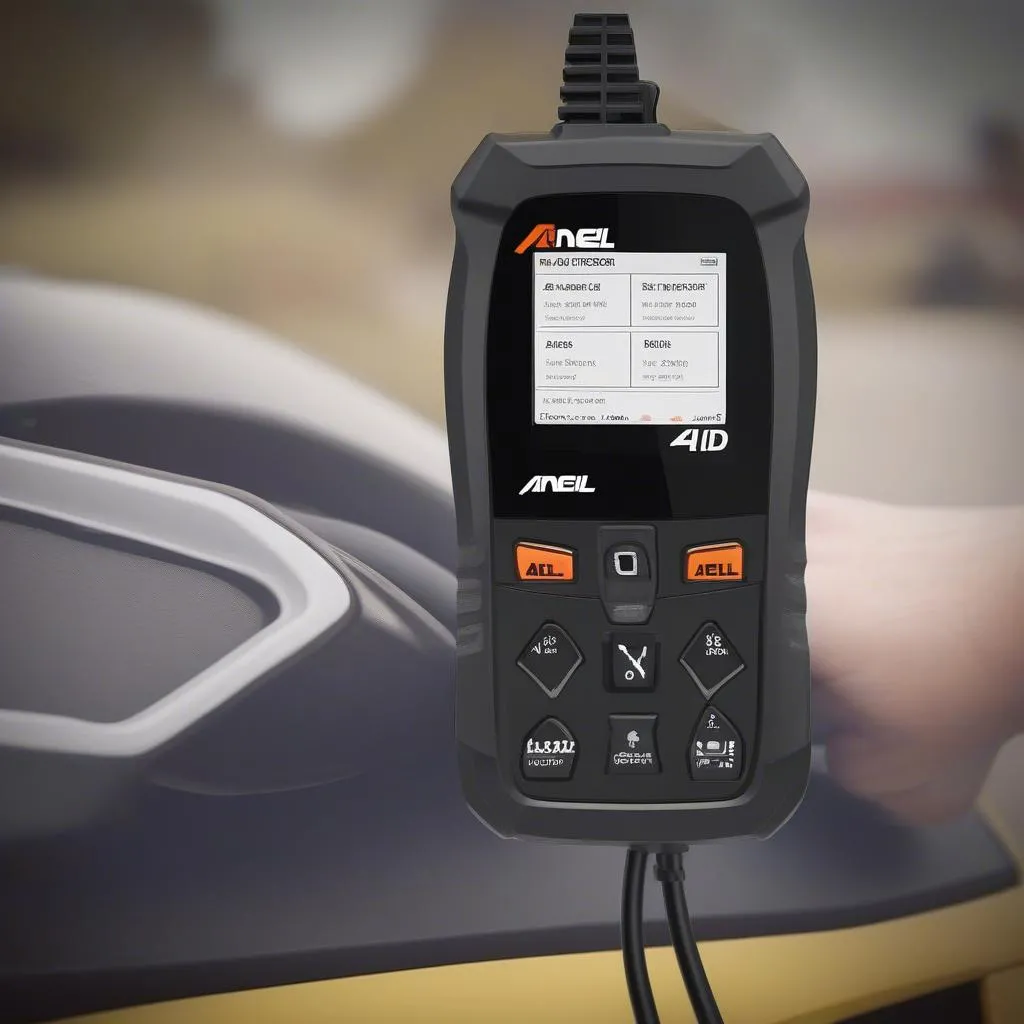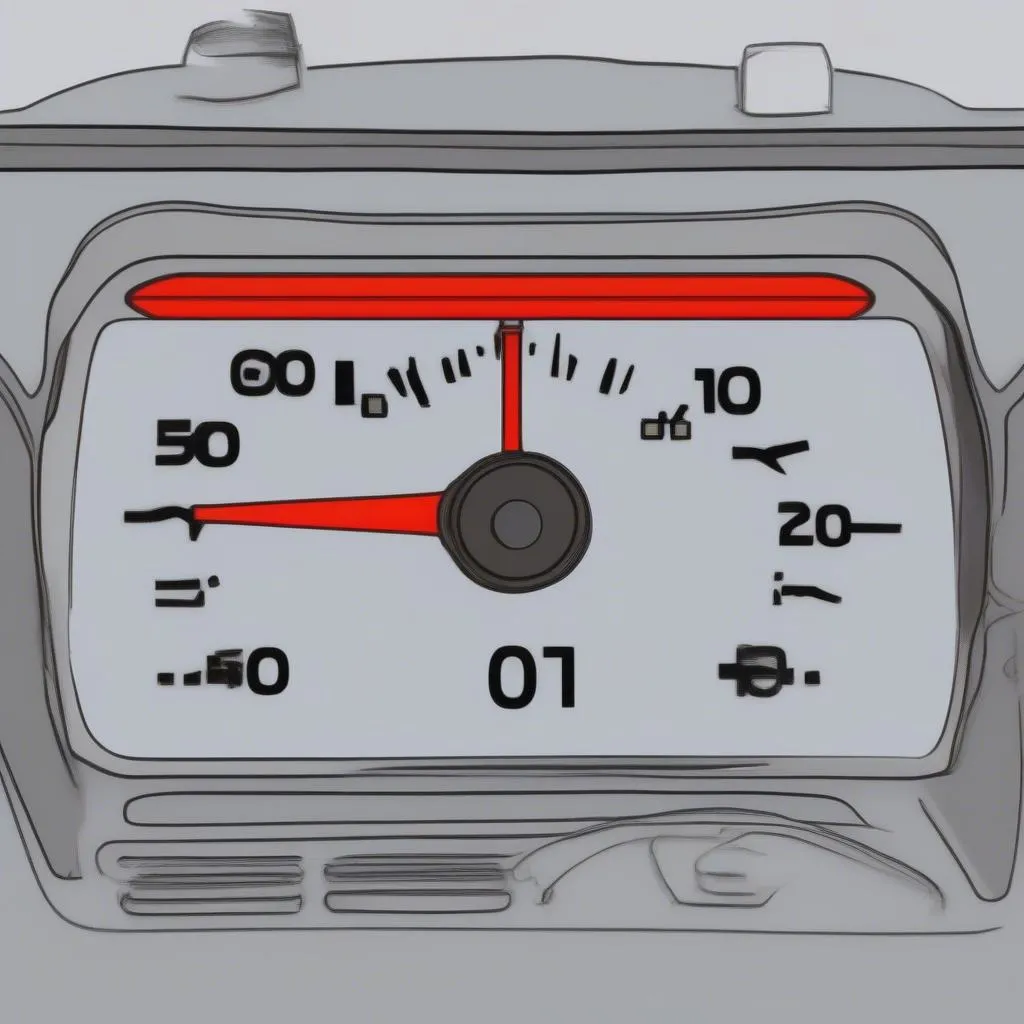Have you ever experienced a check engine light flashing on your dashboard, leaving you wondering what’s wrong with your car? This is a common issue that many car owners face. Thankfully, tools like the Ancel AD410 OBD II Scanner can come to the rescue! But before diving into using this handy tool, it’s crucial to understand the codes it reveals – the Diagnostic Trouble Codes (DTCs).
What are OBD II DTC Codes?
Imagine your car’s engine as a complex symphony, with various components working in harmony to provide smooth performance. However, just like any orchestra, things can go out of tune. That’s where OBD II DTC codes come in. They are like error messages from your car, telling you which parts might be causing trouble.
OBD II, short for On-Board Diagnostics II, is a standard system adopted by most vehicles manufactured after 1996. It enables communication between your car’s onboard computer and diagnostic tools like the Ancel AD410. When a problem arises, the computer generates a DTC code, which the scanner then retrieves and translates into understandable language.
How to Use Ancel AD410 to Decode DTC Codes?
The Ancel AD410 OBD II scanner is a user-friendly tool that helps you interpret these cryptic codes. It’s like having a personal mechanic in your pocket! Let’s break down how to use it effectively:
-
Connect the Scanner: Plug the Ancel AD410 into the OBD II port located under your dashboard. This port is usually found near the steering column or under the center console.
-
Turn on the Ignition: Turn your ignition key to the “ON” position without starting the engine.
-
Select Language: Choose the language you prefer on the scanner’s display.
-
Read DTC Codes: Press the appropriate button on the scanner to retrieve the DTC codes. They will appear on the display screen.
-
Understanding the Codes: Most codes consist of five characters, starting with “P”, “C”, “B”, or “U”.
- P-Codes represent codes specific to the powertrain.
- C-Codes indicate codes related to the chassis system.
- B-Codes refer to codes associated with the body control module.
- U-Codes are generic codes that can apply to various systems.
Deciphering DTC Codes:
Once you have the code, you can use the Ancel AD410’s built-in database to look up its meaning. This database provides explanations for common codes, such as “P0300 – Random/Multiple Cylinder Misfire Detected” or “C1234 – Electronic Stability Control System Malfunction.”
Remember: It’s crucial to consult a qualified mechanic for a professional diagnosis and repair if you’re unfamiliar with interpreting DTC codes or performing repairs on your car.
Common Questions About Ancel AD410 OBD II Codes:
What if the Ancel AD410 shows a code, but my car is running fine?
This situation can be tricky. Sometimes, a code might be stored in the car’s computer even if the problem has been resolved. A reset might be necessary to clear the code. However, it’s always best to consult with a mechanic to confirm whether the issue is truly resolved.
Can I reset the DTC codes myself?
Yes, you can reset DTC codes using the Ancel AD410. However, this will only clear the codes from the car’s computer and might not address the underlying issue. If the check engine light returns, you’ll need to diagnose the problem and fix it.
Where can I find a comprehensive list of OBD II DTC codes?
There are plenty of online resources that provide detailed lists of OBD II DTC codes. A quick search for “OBD II DTC Code List” will lead you to helpful websites.
Tips for Effective DTC Code Interpretation:
- Take Notes: Write down the DTC codes you find, along with the date and time they were retrieved. This information will be helpful if you need to consult a mechanic.
- Consider Your Driving Habits: Think about any recent changes in your driving habits, such as using different fuel types, driving in extreme weather conditions, or encountering any rough road conditions. These factors might contribute to the problem.
- Check for Other Symptoms: Look for other symptoms, such as a decrease in fuel efficiency, rough idling, or unusual noises. These symptoms can provide additional clues about the problem.
Conclusion:
The Ancel AD410 OBD II scanner is a valuable tool for car owners who want to diagnose and troubleshoot basic engine problems. By understanding how to use it and interpret the DTC codes, you can gain valuable insights into your car’s health and take necessary steps to keep it running smoothly.
Remember, if you’re unsure about any diagnostic or repair procedures, seek professional assistance from a qualified mechanic.
 Ancel AD410 OBD II Scanner
Ancel AD410 OBD II Scanner
 Check Engine Light on Car Dashboard
Check Engine Light on Car Dashboard
For any assistance with setting up your Ancel AD410 or any other diagnostic tool, contact us on Whatsapp: +84767531508. We have expert technicians available 24/7 to help you get the most out of your tools.